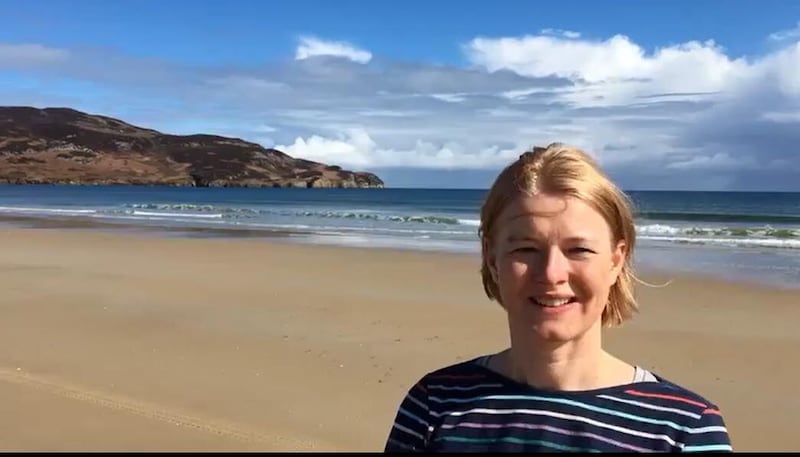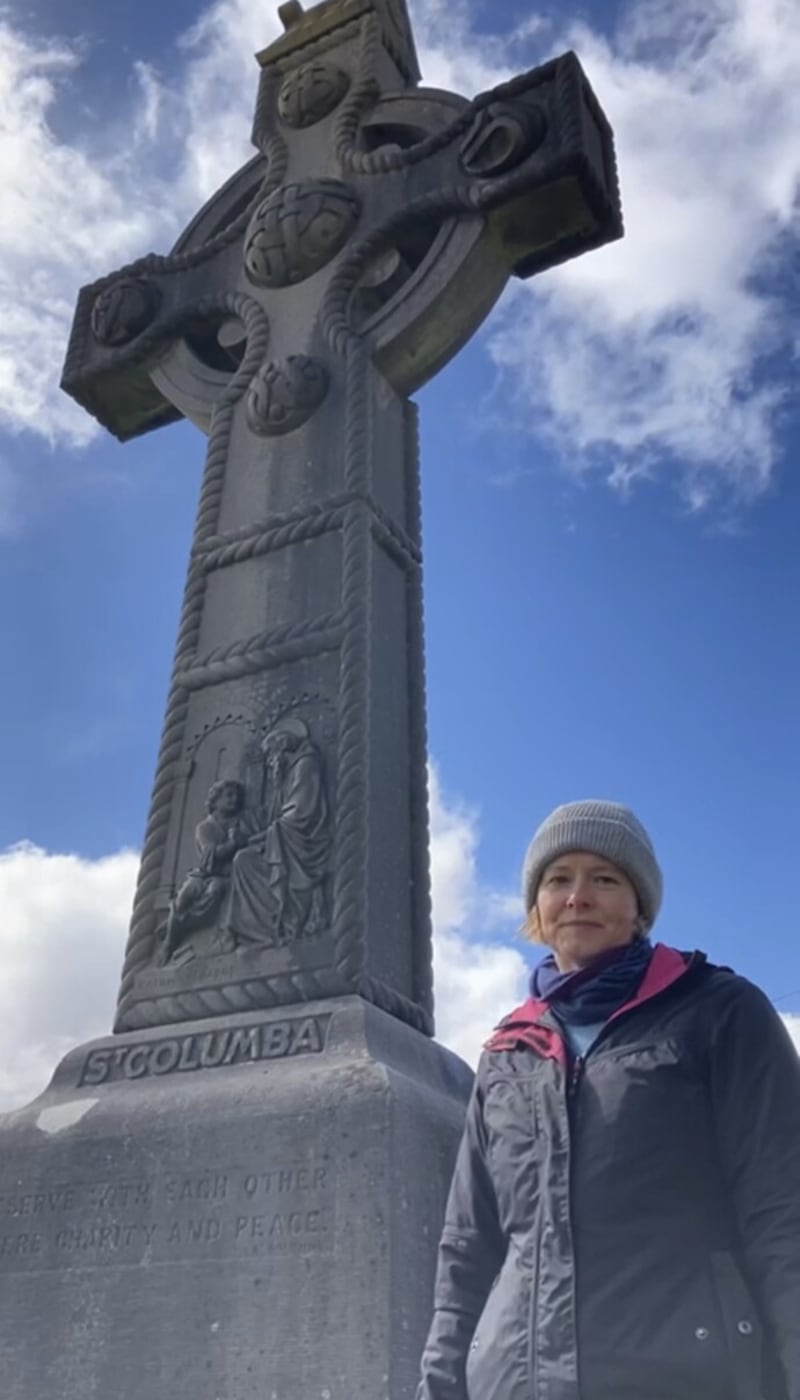Themes of emigration and Ireland’s historical links to America are brought to life in an epic historical fiction novel by Belfast writer Anne Madden.
Donegal’s Glenveagh Castle and National Park is the backdrop to The Wilderness Way, by the former Irish News journalist.
Inspired by a true story, it follows the fortunes of two men from very different backgrounds: one an evicted Irish tenant, the other his landlord.
Sweeping through the American Civil War of the 1860s, they find their lives entwined in the tragedy of conflict which highlights the strength and endurance of the human spirit.
Anne first visited Glenveagh as a child, but it was in her 30s she fell in love with the north Donegal area and first read about the notorious Derryveagh evictions when John Adair evicted all 244 tenants, including 159 children.
“The area is so vast and remote it seemed hard to believe such a drama had unfolded there. I was really moved by their plight, just a decade after the Irish famine, and wondered what motivated this landlord to be so brutal? I suppose that’s the journalist in me,” laughs Anne, who currently works in communications for the walking and cycling charity, Sustrans.
Further research uncovered a series of coincidences that intrigued Anne and motivated her to put pen to paper and fulfill her life-long dream of writing a novel.
“The evictions happened in April 1861 and, of course, that was the very same month the Civil War erupted. Then, when I did a tour of Glenveagh Castle and discovered John Adair, who built it, had married an American Civil War widow, Cornelia Wadsworth Ritchie.”

Her father was a famous general who died during The Battle of the Wilderness. Anne is a modern history graduate from Somerville College, Oxford, and her findings sparked her imagination.
“My head began to buzz. Having studied the American Civil War at university, I decided I could fictionalize an account of the period and tell a fantastic story because historical fiction is such a great way of bringing history to life.”
As well as John Adair, The Wilderness Way is told through the eyes of one of the evicted tenants, a fictionalised character, Declan Conaghan, who immigrates to the US with his brother and fight in the war with the Wadsworth Guards, led by Cornelia’s father.
Conscious of the difference between news reporting and fiction writing, Anne enrolled in a number of creative writing classes at Belfast’s Crescent Arts Centre over the years and worked primarily on her writing during the evenings and weekends.
Read more:
Mick Moloney on Irish in the US, from coal mines to White House
Irish writer Paul Lynch on his Booker Prize shortlisted novel Prophet Song
Pauline Scanlon: A treat for me is an evening in front of the fire and an early night
“I started by drafting a chronology of events, before working on plot and character outlines. Then I got all tied up in knots about being true to the history and got lost in a soap opera of characters. Let’s say it was a meander to get there,” reflects Anne, whose favourite authors include Joseph O’Connor and Sebastian Barry.
She was clear from the onset she didn’t want to stereotype any particular people. “When you write a character you want to show the complexity and different dimensions of people. I didn’t want all rich people to be bad and all poor people to be good.
“I don’t believe John Adair was all bad. There is so little historical records, but from what I can gleam, the Adairs were well-liked, largely due to the fact that Cornelia made him a better person.

Anne dedicates The Wilderness Way to ‘the millions of Irish emigrants of the past and all those around the world today who find themselves homeless through no fault of their own’.
As well as writing an enjoyable story, Anne wanted her book to be “thought-provoking” and “provocative” and hopes that readers will learn more about their past and take away a sense of compassion for emigrants.
“The dedication is a nod to the fact that emigration and immigrants are a fact of life, and with wars and worsening climate disasters we will face more of this in the future.”
A seven-foot high cross, erected by Cornelia Adair in 1911 is still standing in the small meadow beside the Stone of Sorrow, close to Gartan village where the evictions took place.

Anne believes the key message she hopes readers take away from The Wilderness Way is the inscription on Cornelia’s cross - ‘Preserve with each other sincere charity and peace’.
While the novel tackles many themes, including famine, Irish immigration, religion, poverty, black suffrage, civil rights, class and slavery, it’s the topics of eviction and the war which touched Anne most.
“I was most moved by the deep sorrow and strength of character of Irish emigrants who were forced to leave for the States. The farewell send-offs were known as American Wakes because most of them never returned.
“The American Civil War (with a casualty toll of more than 620,000) also touched me. It was the deadliest war in American history and despite the slaves getting their freedom, they didn’t achieve full equality with civil rights, and as we know, this legacy is still felt today by black Americans,” she adds.
Many Irish people have followed the journey of the characters in Anne’s book, including the ancestors of the US President Joe Biden, who departed Co Mayo and Co Louth in the 1850s. Anne believes her novel will “mean something to him” and has had a copy sent to the White House.

In Donegal there are plans to create a walking trail, Slí Cholmcille, in the area which follows many scenes from The Wilderness Way.
During the writing of her novel, a determined Anne rambled across Glenveagh National Park until she found, down an overgrown country lane, one of the original cottages that were abandoned.
“It was quite understated with a plaque stating it was where the evictions had happened. It’s a story I want to bring back to life and remember those people and what they suffered.”
Whilst her first book took over a decade to pen, Anne has already started writing the follow-up novel. “It’s working title is The Lady of Glenveagh, so you can guess who that’s about,” teases Anne, whose advice to others who have a desire to write to “give it a go.”
“Writing is like sculpting something. You keep shaping something until it improves. Sometimes you need to take some time away from it, and you can come back to it fresh.”
And if The Wilderness Way was made into a movie, Anne would have an all-star line-up of Michael Fassbender (Adair), Paul Mescal (Declan), Jessie Buckley (Cara) and Jennifer Lawrence (Cornelia).
The Wilderness Way is published by One More Chapter, an imprint of HarperCollins, and is available in paperback, ebook and audiobook from December 7.
Anne has teamed up with renowned Irish folk band Lumiere to highlight through song the big themes of the story at an event at the Out to Lunch Festival on January 27, 2024 in Belfast’s Black Box. Tickets are available from Cqaf.com.



